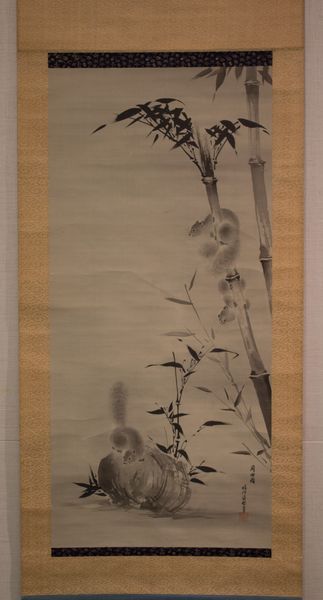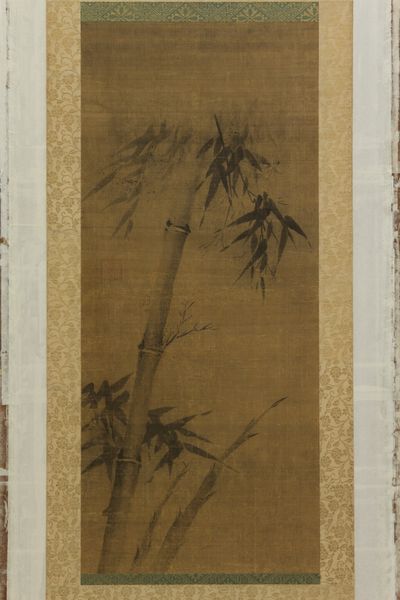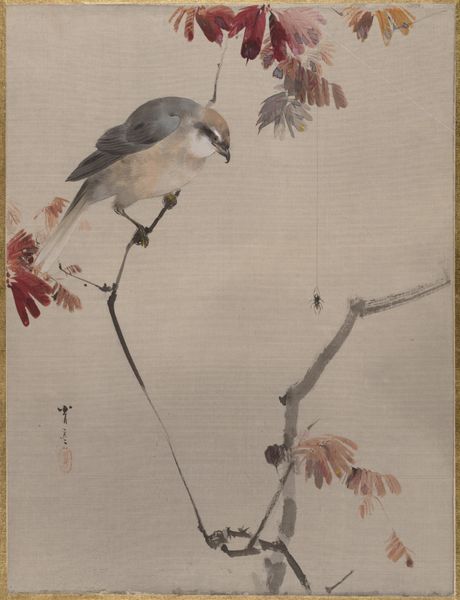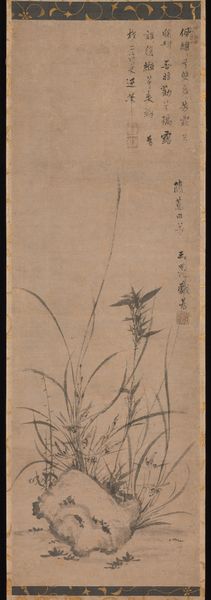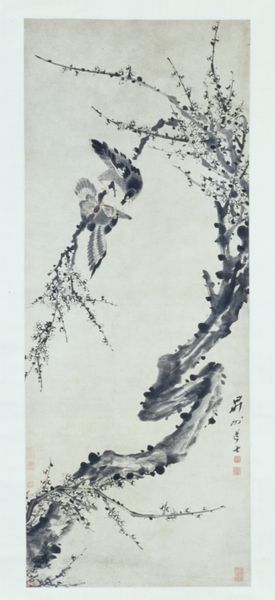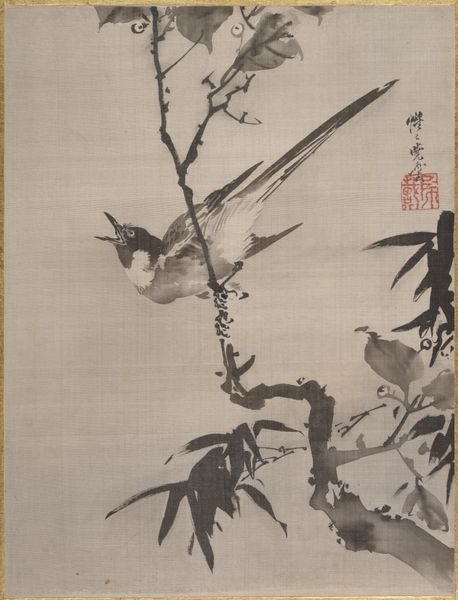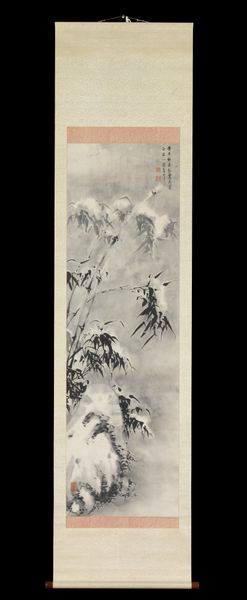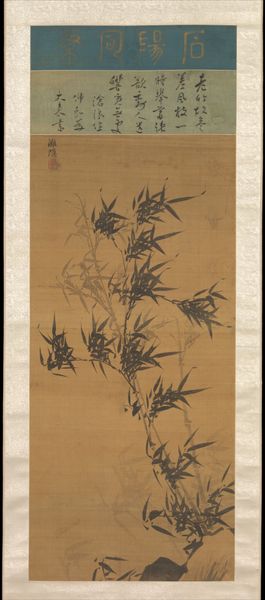
drawing, paper, ink
#
drawing
#
ink painting
#
asian-art
#
landscape
#
paper
#
ink
Dimensions: height 180.0 cm, width 46.0 cm, height 10 cm, width 65.5 cm, depth 10.5 cm
Copyright: Rijks Museum: Open Domain
Chiang Ting made this ink on paper painting, called Bamboo, as a hanging scroll. Bamboo painting has a long history in Chinese art, and is associated with the literati, the elite class of scholar-artists who were steeped in calligraphy, poetry, and painting. How might we understand the enduring appeal of bamboo as a subject? It has much to do with the characteristics associated with the plant: resilience, flexibility, and the ability to withstand adversity. These attributes resonated deeply with Chinese intellectuals, particularly during times of political upheaval or social change. Bamboo became a symbol of moral integrity, a reminder to remain steadfast in the face of challenges. To truly understand the significance of this work, we might delve into the artist's biography, tracing the cultural and political context of its creation, which is preserved in historical texts and institutional records. Ultimately, art like this reflects the values and aspirations of a society, offering insights into its collective psyche.
Comments
rijksmuseum about 2 years ago
⋮
Bamboo painting is said to have originated when a scholar was sitting in his study one night and noticed the shadows of bamboo plants in his garden projected onto the paper window of his study. He then replicated them in an ink painting. Bamboo is a metaphor for a scholar’s grace and resilience.
Join the conversation
Join millions of artists and users on Artera today and experience the ultimate creative platform.

